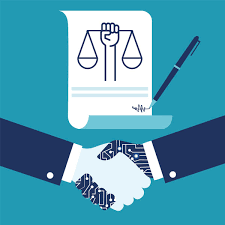- Global AI governance is growing more complex, with governments taking various methods. This demonstrates that global accords may encounter substantial obstacles despite overwhelming support.
About the Council of Europe (CoE)
- The COE is an international organisation founded in 1949. It presently includes 46 member nations, including the Holy See, Japan, and the United nations, as well as EU members.
- Aim: To protect human rights, democracy, and the rule of law in Europe.
Law guarantees that
- AI systems comply with human rights, democracy, and the rule of law throughout their existence.
- According to the EU AI Act and the OECD’s definition, an AI system is a machine-based system that creates outputs based on input and influences real or virtual surroundings.
Coverage:
- Application by Parties: The agreement applies to AI-related actions carried out by both public bodies and private actors acting on their behalf.
- Addressing Risks: Parties must handle the risks and repercussions of AI system activities by private actors that are not covered by (a) in a way that is compatible with the convention’s goals.
What is the difference between a Framework Convention and a Protocol?
- A legally enforceable treaty that establishes broad promises and objectives.Allows parties to choose how to achieve their goals, taking into account their capacities and priorities.For example, consider the Convention on Biological Diversity.
- Protocol: Specific agreements are established inside the framework convention. Specific targets or particular measurements are established to meet the framework convention’s wider objectives.Consider the Cartagena Protocol on Biosafety, which is part of the Convention on Biological Diversity.
Addressing National Security in AI. Convention
- Exclusions for National Security: Articles 3.2, 3.3, and 3.4 grant extensive exclusions for national security interests, research, development, testing, and national defence, eliminating military AI applications from the convention’s purview.
- Balancing Flexibility and Regulation: Article 3(b) gives parties some leeway in applying the convention to the private sector, prohibiting absolute exemption while meeting national security requirements.
- General Obligations: Articles 4 and 5 guarantee the preservation of human rights, democratic integrity, and the rule of law, and require parties to confront misinformation and deep fakes as part of their national security strategies.
- Scope for Further Action: Article 22 empowers parties to exceed defined obligations, allowing for extra actions to address national security concerns about AI.
Conclusion:
The AI convention is critical because it supports existing human and basic rights in the context of AI applications rather than establishing new ones. It emphasises the need of governments upholding fundamental rights while also implementing effective remedies and procedural protections.
Source: https://www.thehindu.com/sci-tech/technology/how-europes-ai-convention-balances-innovation-and-human-rights-explained/article68219354.ece#:~:text=The%20AI%20convention%20doesn't,of%20AI%20systems%20as%20well.

